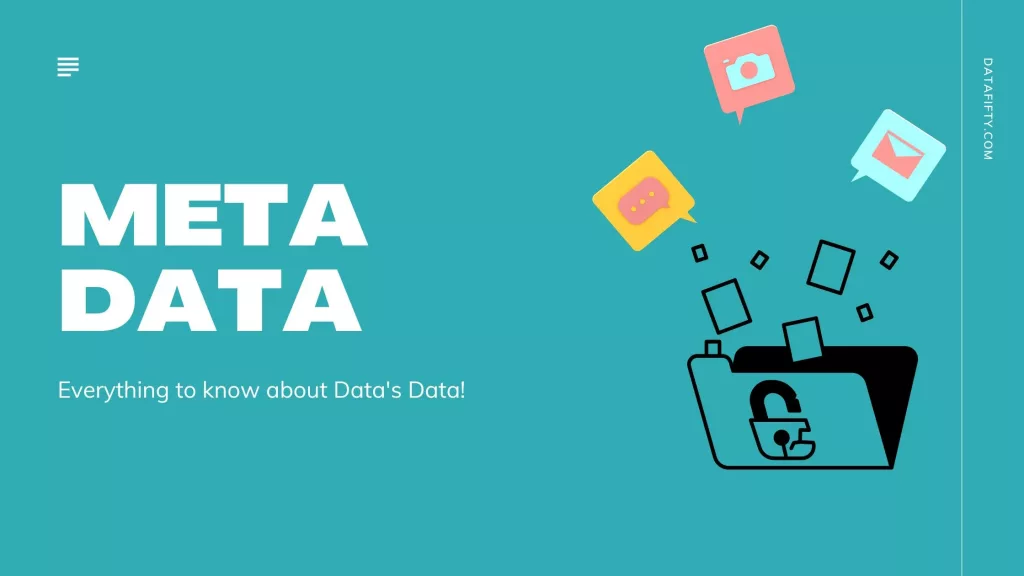More than just data about data. Metadata is the context that gives information a richer identity and forms the foundation for its relationship with other data.

What is Metadata
You might have heard it referred to as data about data. But when the term data can mean different things to different people what does that actually mean? to answer this let’s talk about two different kinds of metadata:
- Descriptive metadata relates to a piece of information and gives you extra detail about it. For example, a title of a picture
- Structural metadata relates to many things and tells you how similar bits of information are stored and what they mean.
It can also be a helpful tool that saves you time, keeps you organized, and helps make the most of the files you’re working with. Let’s paint a picture to explain what metadata is, how it works and why it really matters.
This painting is famous, but let’s imagine you’re seeing it for the first time. You see this woman and child, this couple out for a stroll, this group lounging on the grass, big shapes like this shady spot, or this bright area. The water, the trees. You might be ready to hang it on your wall without knowing much about it, but the painting, as an object, doesn’t tell you that much. This is like a file without metadata. It’s not clear what it is, what it means, and more importantly, what you can really do with it. But what if you wanted to hang this picture in a gallery, where would you start?
Descriptive Meta Data
You’d start with descriptive metadata. This is the basic information: the who, the what, the where, the when of something. For a painting like this we’d start with the artist’s name, where and when he was born, the title, what it’s made of, the size of it, when it was made, and some kind of brief description.
Now we have enough metadata, for a little placard to go with the painting. So visitors know what they’re looking at. But where in the gallery would you put this painting? That’s where structural metadata comes in.
Structural meta data
Structural metadata is information about how an object should be categorized so that it fits into a larger system with other objects. Beyond the obvious, like other paintings by Seurat, we might add 19th Century Painting, French Painting, or Pointillism, the style Seurat helped pioneer with this work. Structural metadata establishes a relationship with other files, so that they can be organized and used in interesting new ways, like the way this painting can be used to tell different stories about art.
But what happens when the exhibition is over?
Let’s talk about administrative meta data.
Administrative metadata is information about the history of an object, who used to own it, and what can be done with it. Things like rights, licenses and permissions. This information is helpful for people managing and taking care of an object So let’s get to know this painting a little better. Seurat finished this painting in 1886. It was then passed down through the Seurat family, acquired by a French dollmaker, who passed it onto his daughter. It was purchased by a prominent art collecting couple, who then gave it to the Art Institute of Chicago in 1926, where it remains to this day. This information is really useful for archivists, researchers and historians looking to understand the relationship this painting has to people, places and other works of art. And if you’d like to show it in your next exhibition you know who to talk to.
Let’s zoom in. At the time Pointillism was a new approach to painting where individual specks of paint, like these, combine to form a single color when seen from a distance. And that’s a lot like how metadata works. One point of data only gains its full meaning when it’s put in the right context. A digital asset management system like Canto is a great tool to help you manage your metadata. And the better your metadata the quicker you can find the file you’re looking for and get back to making something beautiful with it.
Final Thoughts
Let’s say I called you right now. The conversation that we have will be private but the phone is recording:
- your number
- the time and the length of the call
- and even the location that I’m calling from.
The same goes for texting, emailing and chatting online. it’s not what you’re saying but who you’re saying it to. That’s what Metadata is.
For More Articles, visit datafifty.com
